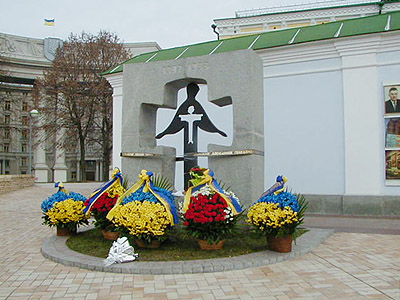
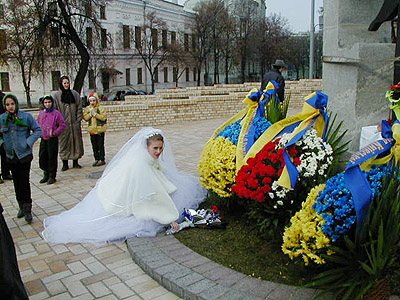
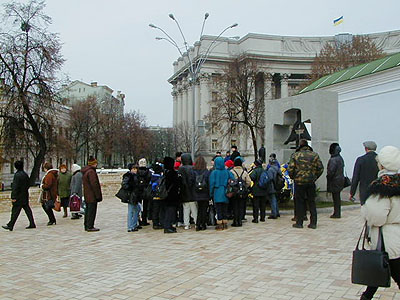
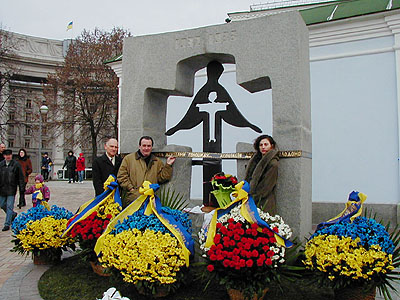
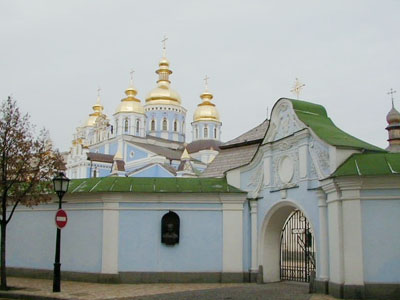
© Council on Foreign Relations Press
Reprinted with permission.
In the winter of 1932-1933, several million Ukrainians (imprecise statistics account for the wide range in estimates, from as low as 2 million to as high as 7 million) died as a result of what was surely a preventable famine. Stalin had embarked on the collectivization of peasant agriculture earlier in the decade; the peasants--Ukrainians , Russians, and all others-resisted. They fought the authorities, sabotaged collective farms, killed party activists, and slaughtered their livestock. As a result, some one to two million Kazakh nomads, who were dependent on livestock for their very survival, perished in 1930-1931.
Two years later it was the turn of the Ukrainians and the residents of the Kuban and the Middle Volga region. This time, however, famine set in not as a result of the actions of peasants, but of the actions and inaction of the authorities. Extortionate amounts of grain were requisitioned; sometimes all of it was simply confiscated. Despite the pleas of local party activists who realized that catastrophe was imminent, nothing was done to alleviate the peasants' hunger. Famine was inevitable. Millions of peasants died, cannibalism broke out, and the peasantry, especially the Ukrainian peasantry, which at that time was the core of the Ukrainian nation, was crushed.
For Ukrainians the famine has assumed mythic proportions. It is the defining moment of their recent history, no less traumatic and portentous than the Holocaust is for Jews. The famine symbolizes the horror of the Soviet experience, the curse of Russian domination, and the necessity of Ukrainian liberation. Some revisionist Western scholars claim that Ukrainians are wrong to insist that the famine was intentional; other scholars support the Ukrainian position. But the scholarly debate is beside the point for most Ukrainians, who perceived the famine as the culmination of centuries of Russian oppression. Such deeply rooted, almost mythical, convictions transform a symbol into a fact that is equally oblivious of empirical corroboration and refutation.
This history of the Famine was excerpted from pages 13-14 of:
Dilemmas of Independence - Ukraine after Totalitarianism
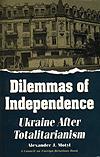 Author: Alexander J. Motyl.
The collapse of the Soviet Union added a large new country -- Ukraine -- to the map of Europe. With its endowment of natural resources amd skilled population of 52 million, Ukraine can play a major role in European and world affairs. How an independent Ukraine evolves internally and the foreign policies it adopts will have considerable impact on Europe, East and West, and on the United States.
Author: Alexander J. Motyl.
The collapse of the Soviet Union added a large new country -- Ukraine -- to the map of Europe. With its endowment of natural resources amd skilled population of 52 million, Ukraine can play a major role in European and world affairs. How an independent Ukraine evolves internally and the foreign policies it adopts will have considerable impact on Europe, East and West, and on the United States.
Alexander J. Motyl, an authority on the post-Soviet nations, examines the painful choices confronting Ukraine. He considers Ukraine's troublesome inheritance from the Soviet Union and discusses ways Ukraine might overcome this legacy to build a modern, democratic, and market-oriented state.
Soft cover (9"H x 6"W); 217 pages. Published by Council on Foreign Relations, 1993. $17.95 at Surma - The Ukrainian Shop
The above text may not be reproduced, in whole or in part, in any form without the written permission from the publishers.